Hans Schleger: Edinburgh’s Poster Boy
Tickets for the one-person court drama Prima Facie starring Jodie Comer at Edinburgh’s Lyceum Theatre next February went on public sale on 26th March at 10am and sold out within the hour leaving thousands disappointed.
The play, written by Australian playwright Suzie Miller, premiered in 2019 with a four-week run at Sydney’s Stables Theatre where it was uber-alliteratively praised by Jade Kops in Broadway World as a ‘powerful piece of pertinent theatre’. After several years touring Australia, Prima Facie opened at London’s Harold Pinter Theatre in 2022 where it starred Comer. A subsequent transfer to Broadway and a National Theatre Live filmed performance watched by over 1.2 million people catapulted Comer into the big time (bigger time than she already was), winning an Olivier Award and Tony Award for her portrayal of barrister Tessa Ensler.
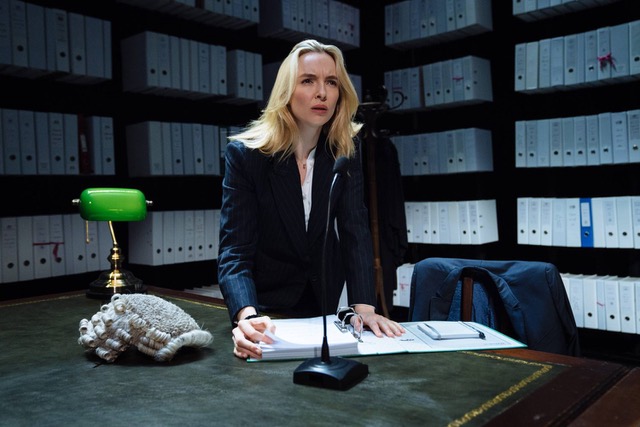

In truth, I’m only jealous of those who managed to secure tickets. And as far as I can make out, the entire 2026 UK & Ireland tour – Richmond, Dublin, Cardiff, York, Bath, Canterbury, Birmingham, Liverpool – is sold out too.
But where the all those theatre lovers, for example, last October when Nathan Queeley-Dennis was at the Traverse with his solo show Bullring Techno Makeout Jamz. Queeley-Dennis wrote the play on his phone while working morning shifts at a Birmingham pub. It won him the prestigious Bruntwood Prize for Playwriting and got glowing reviews at the Edinburgh Fringe in 2022. After that, a run at London’s Royal Court and then last autumn’s national tour including the shows at the Traverse. It was a joy, good old-fashioned storytelling about the intimate relationship between a man and his barber partly told through Beyoncé lyrics, but the sea of empty seats on the Friday night of the Edinburgh run was embarrassing.
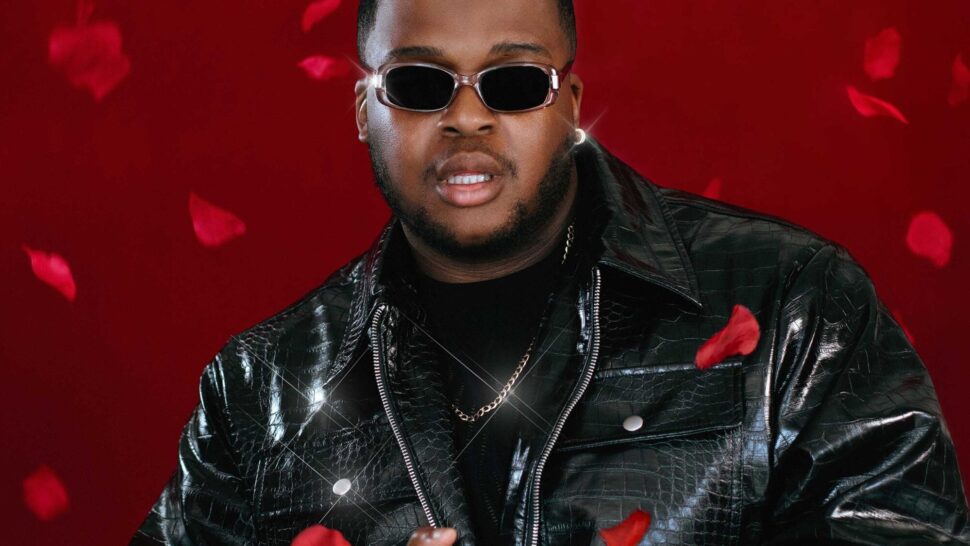

Bullring Techno Makeout Jamz
One difference between the two productions is that Jodie Comer is a known TV star, notably Villanelle in Killing Eve. What would have been the effect on demand for tickets for the 2026 tour of Prima Facie if the part of Tessa Ensler had been announced as being played by Dani Arlington, the understudy to Jodie Comer during both the London and Broadway runs? A hugely talented actor in her own right, she had to learn and rehearse the 100-minute one-woman play not knowing if she was ever going to perform it. As it transpired, she was called upon at short notice only once, when Comer had difficulty breathing due to the poor air quality in New York City because of smoke from Canadian wildfires. I can’t help but feel that there might today be tickets still on sale if Dani Arlington was top of the bill, that is the power of TV.
Tickets for this August’s Edinburgh International Festival went on sale the day after those for Prima Facie. This is Festival director Nicola Benedetti’s third year at the helm. Although not as bonkers as I would like (I’m thinking about when the three-week gig was under the stewardship of Frank Dunlop, how I’d love to see Gdańsk’s Teatr Ekspresji perform their ballet ZUN again, stage set: 1 x cast iron bath, nothing else) she has once again put together an eclectic programme for 2025.
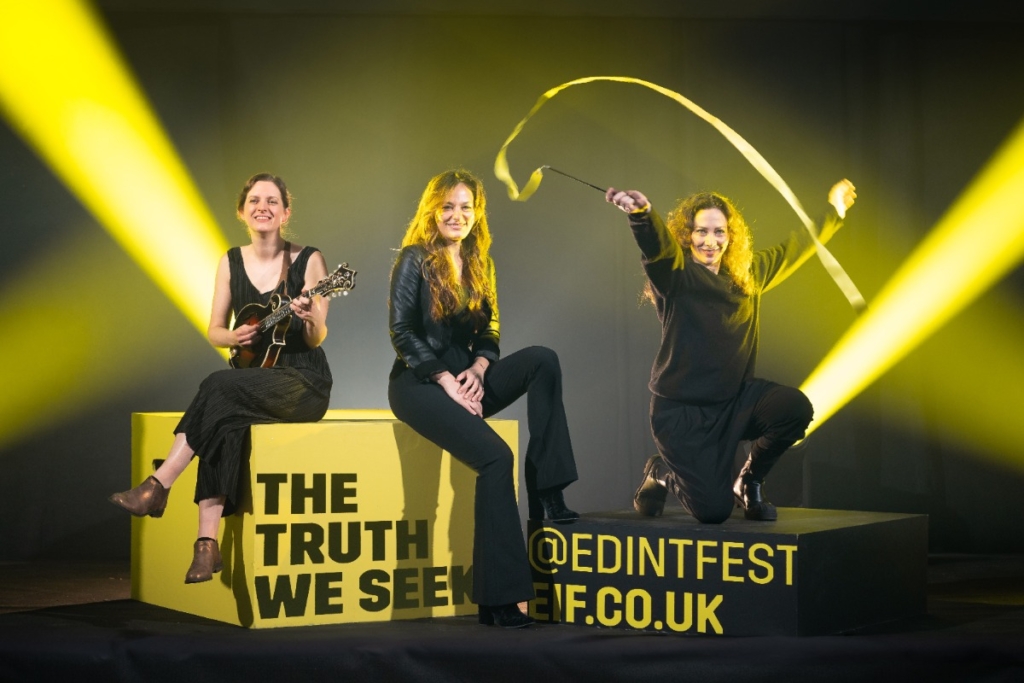

The obvious highlight is National Theatre of Scotland’s Make It Happen about the rise and fall of The Royal Bank of Scotland, starring Brian Cox as the ‘founder of modern capitalism’, Adam Smith. Like Jodie Comer, Brian Cox is a well-known TV star – political drama Bob Servant Independent, and that episode of Minder where he gave Dennis Waterman a kicking on the top deck of a Routemaster double-decker bus – but he started off as, and still very much is, a stage actor. A nice touch then that before its run at the Festival Theatre, Make It Happen is previewing in late July at the Dundee Rep. It was in 1961, at the Rep’s original home in Nicoll Street that a 15-year-old Cox made his debut in A.A. Milne’s The Dover Road. On the occasion of the Rep’s 80th anniversary in 2019, Cox spoke with great fondness of his early years treading the boards in his hometown: “I owe Dundee Rep everything. It formed and shaped me.”
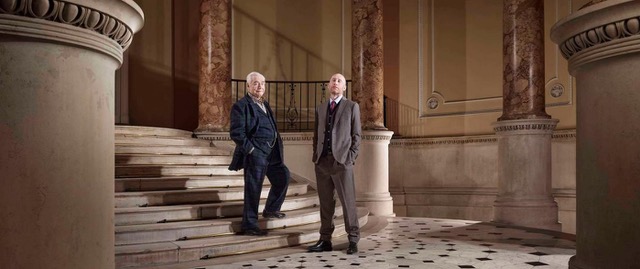

National Theatre of Scotland’s Make It Happen
Elsewhere in the 2025 International Festival programme a new Scottish Ballet production, Mary Queen of Scots ‘imagines a Renaissance where punk meets haute couture’ sounds very Vivienne Westwood; the London Symphony Orchestra have a three-night residency at the Usher Hall including a heavy-duty double bill of Beethoven’s 5th & Shostakovich’s 10th; an Opera Australia production of Orpheus and Eurydice which looks fun, and also only 80 minutes long.
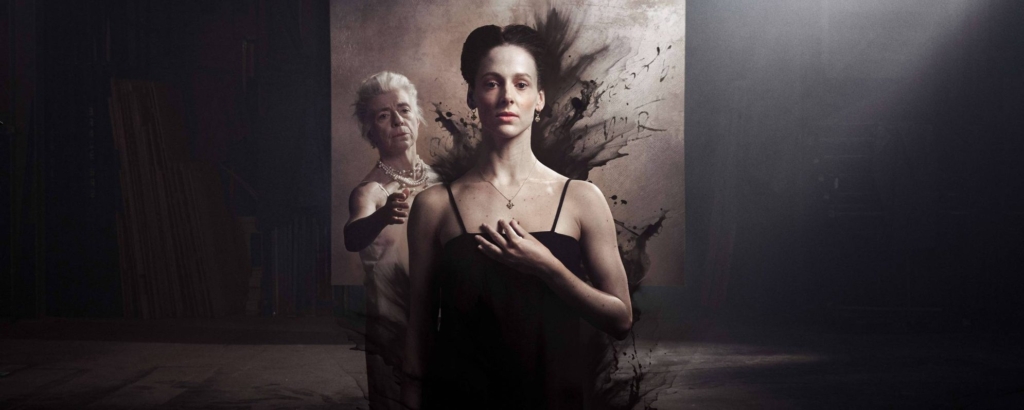

The World Premiere of Mary, Queen of Scots will debut at Edinburgh International Festival next year, followed by a Scottish tour.
And a whole load of music on at the Hub, the likes of which – in fairness – Frank Dunlop would never have touched with a bargepole: to pick one, the haunting folk music of Norwegian trio Østerlide sounds like a welcome escape from the madness of Edinburgh in August. All in all, a lot to look forward to.
My only complaint is the actual physical – paper – programme itself, the cover of which for the tenth consecutive year is an uninspiring combination of yellow and black graphics with nothing, other than the word ‘Edinburgh’, to associate the festival with Scotland’s capital city. While the Festival has always been about looking outwards, it’s as if for the past decade it has been ashamed of its roots. [No way! – Ed]
In her introduction to this year’s programme, Benedetti talks of being caught in a bewildering swirl of “my truth” and “alternative facts” of manipulated language disguised as ‘information’, seemingly oblivious to being part of the problem by eliminating the very soul of the Festival from the cover of her programme.
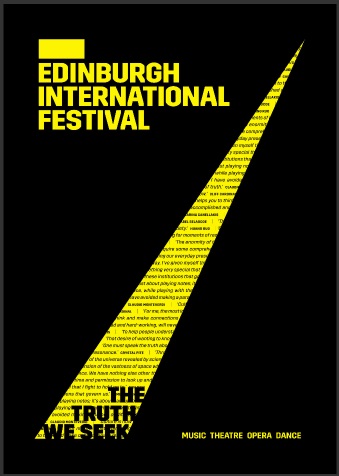

Hans Schleger was born in 1898 in what was then Prussia. He studied at Berlin’s Kunstgewerbeschule before moving to New York where he established himself as a leader in the Modernist approach to advertising. In 1932 he arrived in London and for the next four decades worked as freelance designer and design consultant. He produced iconic work for London Underground, ICI, Penguin Books, the John Lewis Partnership, and many more.
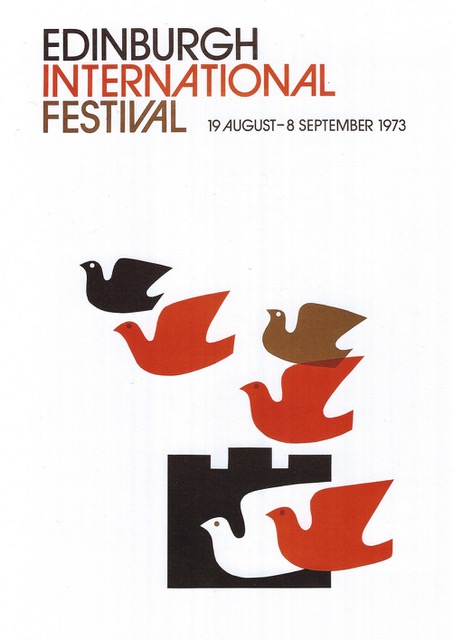

In 1966 Schleger was commissioned by the Edinburgh International Festival to create publicity material to be used on programmes and posters. Together with his equally talented wife Pat, he designed an iconic image of doves and Edinburgh Castle. These became instantly recognisable and variations on the theme continued to be used until 1978. In the catalogue to a 2007 exhibition of Schleger’s work at London’s Victoria and Albert Museum, Fiona MacCarthy writes:
The very early symbol [Schleger] designed for Deutsche Bank in 1929 – the iconic eagle, formalised and threatening – had transmuted by the end of his career into the much gentler and more optimistic symbol of the dove first designed by Schleger for the Edinburgh Festival of 1966. The dove, bearer of peace and cultural understanding between nations, can be taken as sign of Schleger’s personal mythology. It is one of his beautiful and memorable images: the bird above the castle and the city, flying free.
If that link between peace and cultural understanding between nations and the promotion of Edinburgh was important in the 1960s and 1970s, isn’t it still the case – if not more so – now in 2025?

You’re so right about that Edinburgh Int Festival brochure artwork,which is really cheap and tacky and just appalling…
What’s happened to Scotland? It used to be a really cool.place, famous for its design, Glasgow especially…
That brochure just sums up how unambitious the country has become, that yellow slash like a goofy greetings card or something…
Terrible…